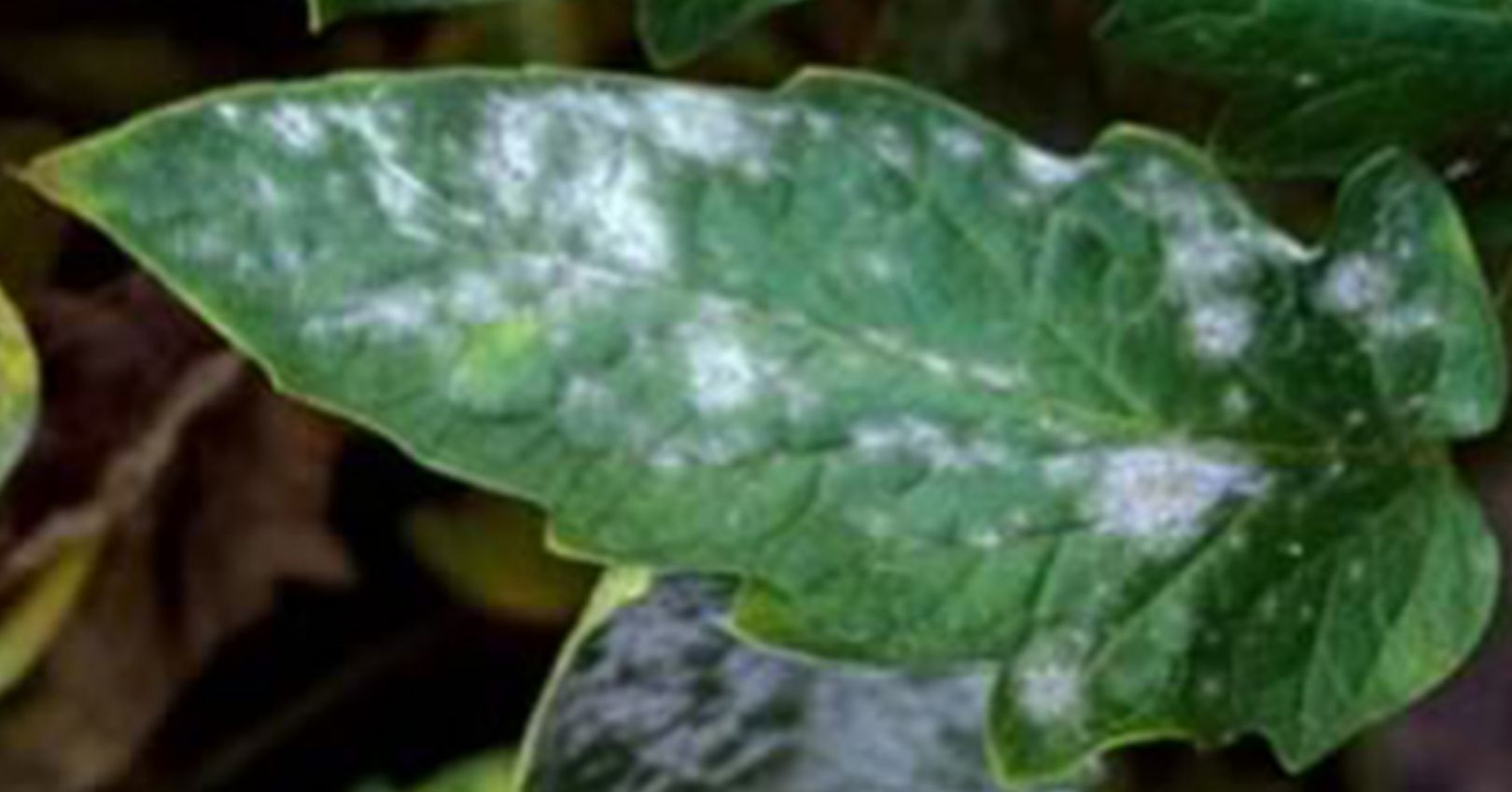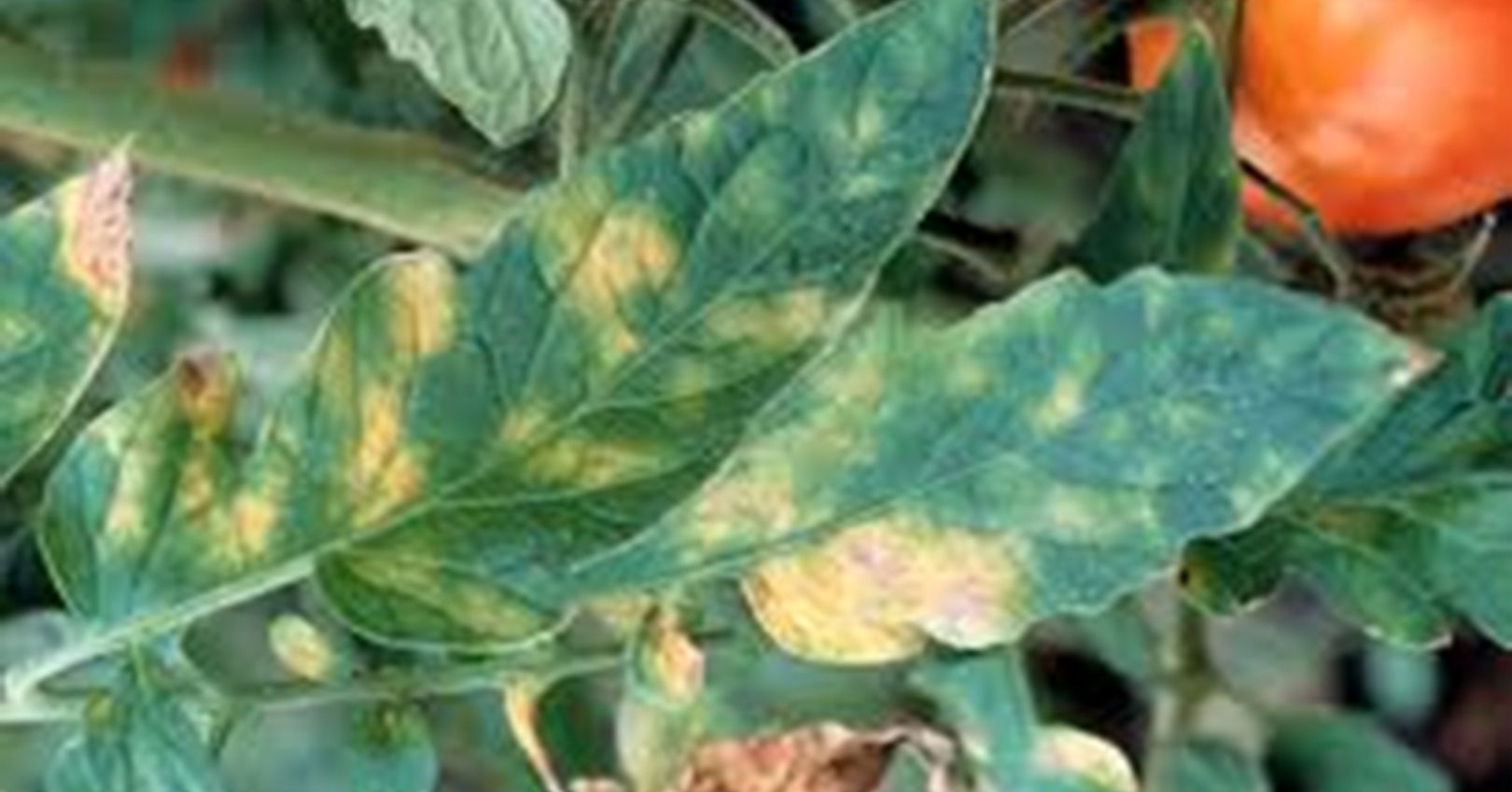Powdery Mildew


Casual Agents
There are two species of powdery mildew that can affect tomatoes: Leveillula taurica and Erysiphe lycopercici. In Utah, so far only Leveilulla sp. has been reported. L. taurica also affects peppers. Powdery mildew has not been reported to affect eggplant
Symptoms
The two species cause different signs and symptoms. E. lycopersici causes the usual powdery mildew signs and symptoms on tomato. The leaves show white, powdery spots that enlarge to cover the entire leaf. L. taurica is an unusual powdery mildew. On the upper leaf surface, it causes chlorotic areas on tomato and pepper rather than the usual powdery appearance. The fungus grows within the plant tissue and the spore-bearing structure (conidiophores) emerge from the stomates, visible with a strong hand lens or dissecting microscope.
Disease Cycle
Powdery mildews need living plant material to survive. When plant tissue dies, they produce resting spores that can survive the winter. On living tissue, the mildew produces a different type of spore that is for fast, mass dispersal.
Infection occurs in early summer either from spores released from fruiting structures in plant debris or by spores blown from warmer areas in the south. Spores can be carried by wind currents for hundreds of miles. In contrast to many fungi, powdery mildews do not grow well in rain or free water. For infection, powdery mildews only need high humidity or dew for a few hours. After a spore lands on a suitable plant surface, it germinates and the germ tube penetrates the tissue and starts growing either on the plant surface (E. lycopersici) or within the plant tissue (L. taurica). It takes about a week after infection before the first spores are produced and dispersed. Once spores are produced in a field, powdery mildew spreads quickly from plant to plant by wind and on clothes of workers.
Management
Powdery mildew must be controlled early when the first lesion is seen. Once the fungus grows over the leaf tissue or entire leaves are yellow, it is too late to control the disease.
- Remove infected plant debris from fields before planting a new crop.
- Use fungicides. Apply fungicides throughout the growing season after the first symptoms have developed, according to label directions.

